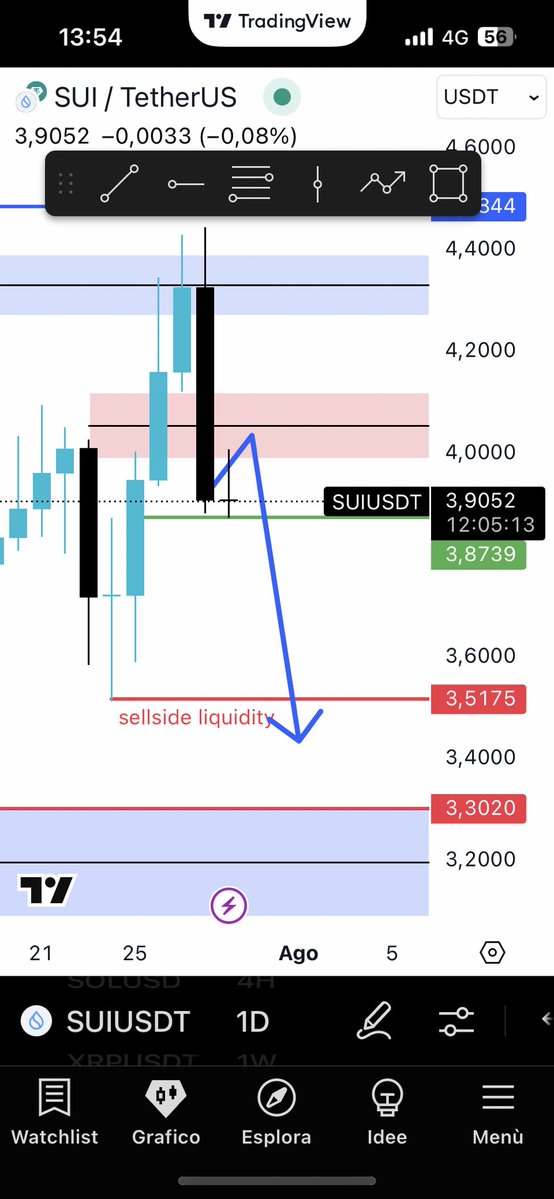The Evolving Landscape of Cryptocurrency Trading
The world of cryptocurrency trading has undergone a remarkable transformation over the past decade. What once started as a niche hobby for tech enthusiasts has now blossomed into a mainstream investment avenue, attracting both retail and institutional investors. As we stand on the cusp of a new era in 2025, the landscape is more dynamic and promising than ever. This report explores the current trends and provides insights into what the future holds for cryptocurrency traders.
Institutional Adoption and Market Sentiment
Institutional Investors: The New Players
Institutional investors have increasingly recognized the potential of cryptocurrencies, leading to a surge in adoption. Market sentiment analysis indicates that institutional adoption is a significant driver of positive sentiment, with a score of +0.80. This trend is crucial as it brings stability and liquidity to the market, making it more attractive to retail investors. The entry of institutional players has also led to the development of more sophisticated trading tools and strategies, further enhancing the overall trading experience.
Bitcoin: The Flagship Cryptocurrency
Bitcoin, the pioneer of cryptocurrencies, continues to lead the pack with a positive sentiment score of +0.65. Despite regulatory concerns, which have a bearish outlook score of -0.45, Bitcoin remains a favorite among both institutional and retail investors. The smart money is moving in, indicating confidence in the long-term prospects of Bitcoin. As the first and most well-known cryptocurrency, Bitcoin has set the standard for the entire industry, and its continued dominance is a testament to its resilience and potential.
Regulatory Environment: Navigating Uncertainty
Policy Shifts and Regulatory Clarity
The regulatory environment for cryptocurrencies is evolving rapidly. Recent policy shifts towards crypto-integration in US governance, including the establishment of a strategic Bitcoin reserve and regulatory clarity, are significant developments. These changes are expected to provide a more stable and predictable environment for cryptocurrency trading, fostering growth and innovation. As governments and financial institutions increasingly recognize the benefits of cryptocurrencies, regulatory frameworks are likely to become more favorable, paving the way for wider adoption and integration.
The Impact of Regulatory Concerns
Regulatory concerns remain a significant challenge for the cryptocurrency market. The bearish outlook score of -0.45 highlights the uncertainty and potential risks associated with regulatory changes. However, as governments and financial institutions increasingly recognize the benefits of cryptocurrencies, regulatory frameworks are likely to become more favorable. This will provide a more stable and predictable environment for cryptocurrency trading, fostering growth and innovation. Traders and investors must stay informed about regulatory developments and adapt their strategies accordingly to navigate this evolving landscape.
Technical Analysis: Key Indicators and Trends
Total Market Cap: Consolidation and Resistance
The total cryptocurrency market cap is currently consolidating within a descending channel, facing rejection from the resistance trendline. The Ichimoku Cloud above acts as a strong resistance barrier, indicating potential downward pressure. Traders should closely monitor these indicators to make informed decisions. The consolidation phase presents an opportunity for traders to assess the market’s strength and identify potential entry and exit points. By analyzing the market cap trends and resistance levels, traders can better understand the market’s direction and make more accurate predictions.
Bitcoin and Ethereum: Recovery Signals
Bitcoin and Ethereum, the two largest cryptocurrencies by market capitalization, are showing signs of recovery. Bitcoin has been consolidating between $76K and $85K, with the Relative Strength Index (RSI) turning bullish and increasing volume. The key resistance level at $85K could trigger the next leg up. Ethereum, on the other hand, is stabilizing between $1,450 and $1,650, with the RSI bouncing from oversold territory. The key level to watch is $1,700. These recovery signals indicate a potential upward trend for both cryptocurrencies, presenting opportunities for traders to capitalize on the market’s movement.
Technological Advancements: AI and Technical Analysis
The Role of AI in Cryptocurrency Trading
Artificial Intelligence (AI) is revolutionizing cryptocurrency trading by providing advanced technical analysis tools. AI-driven platforms offer free technical analysis, helping traders make data-driven decisions. This technology is crucial for navigating the volatile cryptocurrency market, providing insights and predictions that can enhance trading strategies. By leveraging AI, traders can gain a competitive edge and make more informed decisions, ultimately leading to better trading outcomes.
The Future of AI in Cryptocurrency Trading
As AI continues to evolve, its role in cryptocurrency trading is expected to grow. AI-driven platforms will become more sophisticated, offering real-time analysis and predictive modeling. This will enable traders to stay ahead of market trends and make more accurate predictions, ultimately leading to better trading outcomes. The integration of AI in cryptocurrency trading will also lead to the development of more advanced trading algorithms and strategies, further enhancing the overall trading experience.
The Future of Cryptocurrency Trading
Embracing Innovation and Adaptability
The future of cryptocurrency trading lies in embracing innovation and adaptability. As the market continues to evolve, traders must stay informed about the latest trends and technological advancements. This includes leveraging AI-driven tools, understanding regulatory changes, and monitoring market sentiment. By staying ahead of the curve, traders can better navigate the dynamic cryptocurrency market and achieve long-term success.
Preparing for a Volatile Market
The cryptocurrency market is inherently volatile, and traders must be prepared for fluctuations. By staying informed and adaptable, traders can navigate the market’s ups and downs more effectively. This includes diversifying portfolios, setting stop-loss orders, and staying updated on market news and trends. By adopting a proactive approach, traders can better manage risk and capitalize on market opportunities.
Conclusion: The Path Forward
The future of cryptocurrency trading is bright, with institutional adoption, regulatory clarity, and technological advancements paving the way for growth. As we move forward, it is essential to stay informed, adaptable, and innovative. By embracing these principles, traders can navigate the dynamic cryptocurrency market and achieve long-term success. The cryptocurrency market is poised for significant growth and innovation, and those who stay ahead of the curve will be well-positioned to capitalize on the opportunities that lie ahead.
Sources





